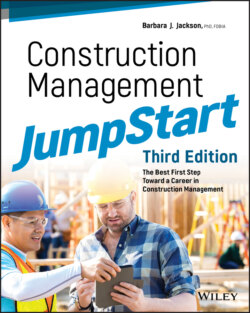Читать книгу Construction Management JumpStart - Barbara J. Jackson - Страница 121
Design-Bid-Build design-bid-build
ОглавлениеA project delivery method in which the owner holds two separate contracts for design and construction. This method is often referred to as the traditional project delivery method.
Design-bid-build is commonly referred to as the traditional method of project delivery, and the traditional accountabilities apply. In this scenario, the owner first hires the architect or engineer to design the building or structure. The design professional prepares a design, moving through the three standard design phases: schematic design, design development (the design development drawings are often referred to in the industry as DDs), and finally contract documents (referred to as CDs). Under this arrangement, the design professional is usually selected on a qualifications basis and then is typically paid a fee or a percentage of the building cost for their services. (Contract documents will be discussed in greater detail in Chapter 4, “The Construction Contract.”)
After the plans and specifications are complete, the owner selects the general contractor who will provide the construction and construction management services. The most common means for selecting the general contractor under this method is by low price or low bid: several competing contractors estimate the project based on the contract documents, and the builder with the lowest price gets the contract. The general contractor typically subcontracts various sections of the work to specialty contractors. Under this method, the owner holds two separate contracts, one with the designer and one with the contractor.
In this arrangement, all dealings between the designer and the contractor go through the owner. There is no legal agreement between the designer and the contractor. This method is very linear in nature, and the contractor does not have any input regarding the design of the project. The contractor is only responsible for carrying out the work as spelled out in the plans and specs and will utilize the various construction management functions to accomplish this task.
Under the design-bid-build method, the owner warrants the sufficiency of the plans and specs to the contractor. If there are gaps between the plans and specs and the owner's requirements or any errors and omissions in the design, the owner is responsible for paying for those corrections. I mention this because the contractor is often the one who discovers the errors and submits the change orders necessary to correct the work. This is never a happy occasion for the owner. A constructability review, which will be mentioned later, can help prevent such surprises.
